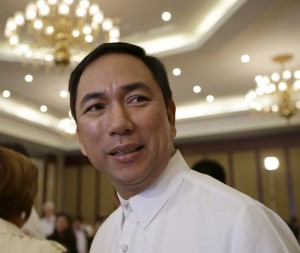AQA Global receives grant of 15 hydro projects from DOE
MANILA, Philippines–As part of its drive to develop renewable energy in the country, the Department of Energy (DOE) granted AQA Global Power Inc. 15 hydroelectric power (HEP) projects with a total capacity of 288 megawatts.
All projects will be powered by water sources in Palawan and Lanao del Sur.
Two of the largest projects are the 50-megawatt hydroelectric power project in Lake Dapao and the 50-megawatt project in Maitling River located in Malabang and Tubaran municipalities in Lanao del Sur.
Other projects in the same municipality are the Baras River HEP (30 megawatts) and Matadi River HEP (27 megawatts).
The projects in Palawan are the Marangas River HEP in the municipality of Bataraza (with a capacity of 12 megawatts), the Sologon River HEP at Brook’s Point (12 megawatts), the Busuanga River 1 HEP in Busuanga (8 megawatts), the Ilian River Kaliwa HEP in Dumaran (20 megawatts), the Ilian River Kanan HEP in Dumaran (12 megawatts), the Estrella River HEP in Narra (8 megawatts, the Bato-Bato Kaliwa HEP in Narra (12 megawatts), the Malasgao Kaliwa HEP in Narra (10 megawatts), the Inaguan River HEP in Puerto Princesa City (12 megawatts), the Culasian River HEP in Rizal (10 megawatts), and the Barabakan River 1 HEP in Roxas (15 megawatts).
Energy Secretary Carlos Jericho Petilla already signed the service contracts for the hydroelectric projects, the DOE announced.
“The average size of the hydros is around 20 megawatts, with the smaller ones in Palawan and the big ones in Mindanao,” Energy director Mario Marasigan said.
According to the Energy department, HEP plants are classified based on their capacities: Microhydro (1 to 100 kilowatts), minihydro (101 kilowatts to 10 megawatts), and large hydro (more than 10 megawatts).
The Renewable Energy Law of 2008 ushered the entry of hydroelectric, biomass, wind, solar and ocean power projects as part of efforts to diversify the country’s energy mix and curb the state’s reliance on imported fuel.
Under the proposed DOE fuel mix policy, the country is expected to source 35 percent of its energy from coal, 30 percent from natural gas, and the rest from renewable energy sources including geothermal and hydro.
The DOE says it is tapping data from a Japanese-funded research entitled “Micro hydropower Development Study for Unenergized Barangays” to identify at least 40 microhydro sites for development in various regions.
To date, the DOE said potential capacity from approved renewable energy projects already reached 10,683 megawatts. Most of the awarded projects are hydro-based, with a potential capacity of 6,158 megawatts.
Currently, DOE said, the installed renewable energy capacity is at 2,333.32 megawatts.
The DOE said it would work with the National Renewable Energy Board (NREB) to reach the targets set out under the National Renewable Energy Plan.
Under the plan, RE capacities will be tripled from the current installed capacity of 5,438 megawatts to 15,304 megawatts by 2030.

